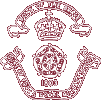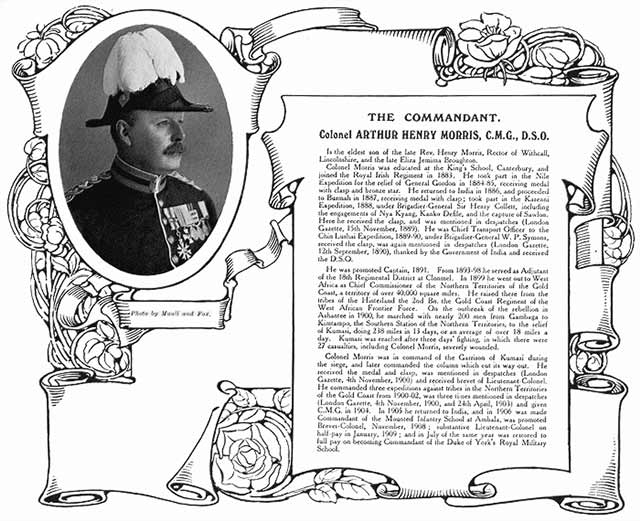


 |
 |
|
 |
||
| Navigation links at the bottom of this page | |||
First year in new premises |
|||
|
In 1909, the school moved lock, stock and barrel from the old premises in Chelsea, which had been occupied since 1803. In celebration of the event, the school produced a commemorative album of photographs of every aspect of school life including the new buildings – houses, school, gym, chapel, hospital and swimming pool – sports and occupational activities, members of staff, and the entire school of pupils by houses in residence that year. The album was in large part funded by the advertizing of the goods and services offered by merchants and businesses in the Town of Dover. Thanks to the generosity of Mrs. Jennifer Lawson, of Hall, Australia, whose grandfather George William Hanna and great-uncle John Hanna attended the school at Chelsea, this album of views is available for viewing. It is posted for those who wish to see what the life at the school was like in 1909. In the almost one hundred years that have passed since the school moved into its new accommodation at Dover, its character, psyche and culture have undergone profound changes. There are some who would challenge the assertion, yet to anyone who experienced life at school fifty years ago, those changes are patently obvious. Civilian clothes have replaced the red and khaki uniforms, the school staff is almost entirely civilian, girls are admitted in equal numbers to boys, gone is the military ethos, replaced by a distinctly public school atmosphere. Most profound of all the changes is the emphasis on an educational curriculum that follows the national curriculum, which guarantees that students of the Duke of York's have an equal opportunity within the National Education System to attend university. The Duke of York's in 1909 |
|||
 |
|||
| n the days when George the Third was King, and his Son Frederick, Duke of York, Commander in Chief the Royal Military Asylum, now known far and wide throughout the Army as the Duke of York’s School, was founded. | |||
So great was
the loss of life in the country's wars, and. so widespread the distress
of widow and orphans that it was decided to found an Institution which
would receive, care for, and train the fatherless children of soldiers. It was rightly
felt by the nation that in the future England's orphans should be England's
care and with this honourable intention the foundation stone of the building
was laid on the 19th June, 1801.
Much care and anxious thought were given to the scheme; all the arrangements were made under the direct patronage of the Royal Family; leading men to the Church, the Army, and the State lent willing aid, and in 1863 its doors were thrown open to the stream of youthful life which had never ceased to flow. Applications for admission poured in by hundreds. Commencing with 150 Boys and 100 Girls. the numbers soon swelled to 1,000, then to 1,200. and for a time to 1,250. The education given was for those days a remarkable one, and speedily became celebrated; so much that we find in 1811 an application from our Army to Portugal asking that two boys might he sent from Chelsea to assist in forming a school for soldiers' children in that country. H.R.H. the Duke of York to the day of his death, continued to be a constant visitor to the school, and a regular attendant at Divine service. Since its foundation, a century has rolled by and though many changes have taken place, rendered necessary by the march of time, such as the reductioon of the number of its inmates to 510 and the banishment of the girls, the Duke of York's school still holds its unique place as England's Military' School. No longer a Refuge or an Asylum in the former meaning of the words, it has developed into what might be called a training school for the supply of embryo non-commissioned Officers to the Army, while deserving soldiers of good character regard it as a reward and a privilege that their sons find an entrance within its walls. The School Roll of Honour contains some interesting names; Lazarus, the eminent clarinetist; Sullivan, the father of the famous musician; Major-Generals McKay and Campbell who enlisted as boys from the School and climbed to the highest rung of the military ladder. Commissions in the Army have been gained by numbers of former pupils – some 80 names are known and recorded – and every year the list is added to. The Royal Humane’s Society's Medal for saving life has been awarded on several occasions, and that much prized decoration, the Victoria Cross, was bestowed on Corporal Shaul, 71st Highland Light Infantry, during the South African War. At the present time there are serving in the Army 1,667 Duke of York's Boys, classified as follows; Officers, 34; Warrant Officers, 62; Non-Commissioned Officers, 615; Trumpeters and Drummers, 175; bandsmen, 216; Privates, 294; and Boys, 271. The characters of these former pupils as shown in the annual returns, are given as :— “Exemplary,” "Very Good” and "Good," 1,583, while but one is described as "Bad." The Duke of York's School enjoys the further distinction of carrying colours, similar to those borne by the infantry Regiments. The right to bear them was granted by King George the Fourth, in the year 1825, when he presented the school with those Colours which now hang in the Chapel, after being borne by the boys for 72 years. That the School Continues to enjoy the interest of the Royal Family
is shown by the visit of Their Royal Highnesses the Duke and Duchess
of Cornwall and York in 1897; (our present King and Queen) when they
presented New Colours to the boys on behalf of Her late, Majesty Queen
Victoria. Their Royal Highnesses again visited the School as the Prince
and Princess of Wales on the 2lst March, 1908, and His late Majesty
King Edward VII, accompanied by Her Majesty Queen Alexandra and several
members of the Royal Family, also visited the School on 23rd May, 1908.. The affairs of the School are managed by a Board of Commissioners, who are appointed under the provisions of a Royal Warrant, a list of whom is published in official Army List. |
|||
 |
|||
| Click the above image for a page with the words at a readable size. | |||
|
By clicking above Link - see the album of Photos. |
|||
| ||||||||||
|
© A. W. Cockerill 2011 Site Map Contact me | ||||||||||